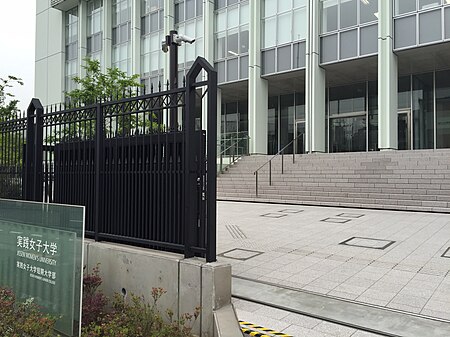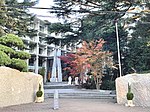Jissen Women's University Junior College
1950 establishments in JapanEducational institutions established in 1950Japanese junior collegesPrivate universities and colleges in JapanUniversities and colleges in Tokyo ... and 1 more
Women's universities and colleges in Japan

Jissen Women's University Junior College (実践女子大学短期大学部, Jissen joshi daigaku tanki daigakubu, lit. 'Jissen Women's University Junior College Department') is a Japanese private university with its headquarters in 1-1-49 Higashi, Shibuya, Tokyo. It was founded in 1899 and established as a university in 1950. Its university abbreviation is Jissen JC (実践短大, Jissen Tandai)
Excerpt from the Wikipedia article Jissen Women's University Junior College (License: CC BY-SA 3.0, Authors, Images).Jissen Women's University Junior College
Roppongi-dori Avenue, Shibuya
Geographical coordinates (GPS) Address Nearby Places Show on map
Geographical coordinates (GPS)
| Latitude | Longitude |
|---|---|
| N 35.6581 ° | E 139.7101 ° |
Address
私立 実践女子学園中学校 高等学校
Roppongi-dori Avenue
150-8366 Shibuya
Japan
Open on Google Maps







